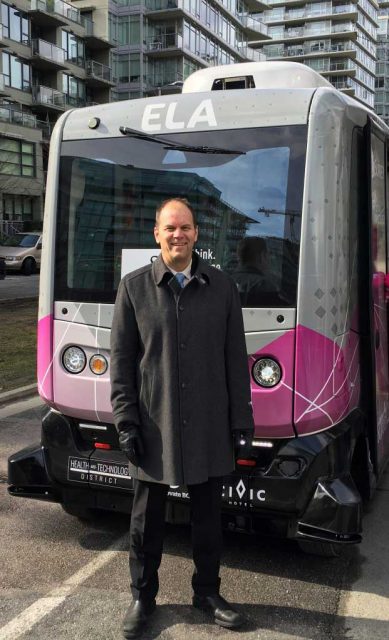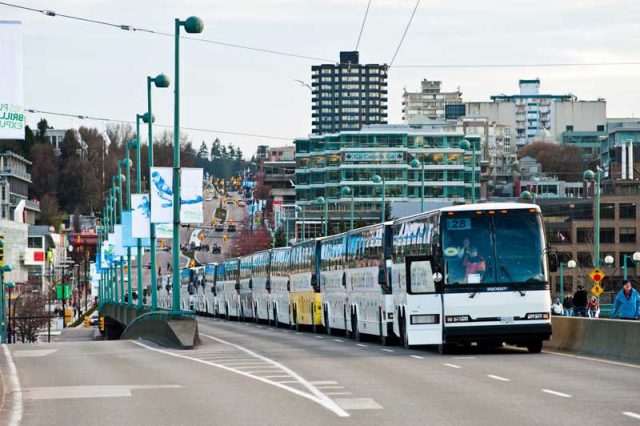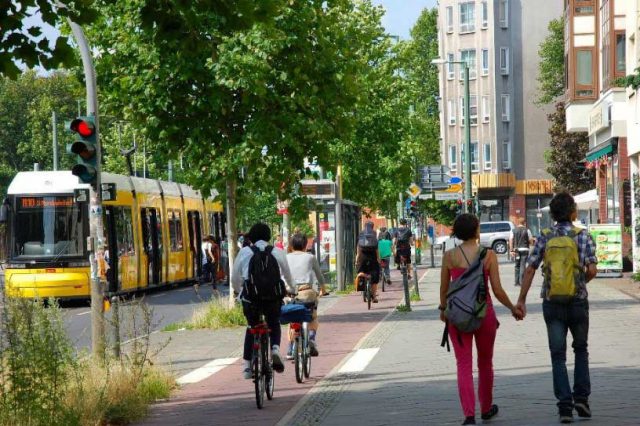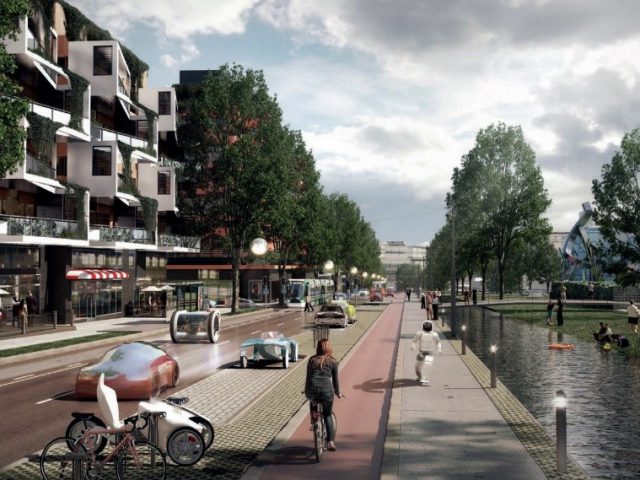#Transport2050: Gold-medal transit and reimagined streets for tomorrow, by City of Vancouver’s Dale Bracewell
#Transport2050: Gold-medal transit and reimagined streets for tomorrow, by City of Vancouver’s Dale Bracewell

We’ve asked thought leaders to share their vision for the future of transportation. What do you see? Shape the future of how we move and live. Visit transport2050.ca.
By Dale Bracewell, Manager, Transportation Planning, City of Vancouver
My vision for Metro Vancouver in 2050 is that mobility will be transit-rich, people-centred, and equitably priced.
Transit-rich

Do you remember riding transit to downtown Vancouver during the 2010 Olympic Games? Service was abundant and convenient seven days a week, all hours, with enough bus and rapid transit capacity to woo you from even considering taking your car. Now double that transit capacity and you will be close to the amount of frequent, integrated and comfortable transit available in 2050.
The new normal for taking longer distance trips will instinctively be by transit as it will be available for almost all our desired origins and destinations. New expressions of autonomous transit beyond SkyTrain are welcomed helping move the majority of people in the safest and most cost-effective way. Autonomous or not, heaps of road space have been allocated just for transit, whereby the new “Dedicated Transit Network” (DTN) surpasses the “Major Road Network” (MRN).
People-centred

While we spend the next decade embracing the world of new mobility, people-centred walkability is celebrated in every municipality. This will be supported by various “healthy city” strategies encouraging us to socially connect more within our communities. Decades of new development has included accessible public realm streetscapes and green infrastructure to help us resiliently manage the effects of climate change.
These new developments also strategically provide us with all the daily destinations we desire to have within walking distance of wherever we choose to call home. Walking is also our premiere mode for getting to transit or our nearest shared vehicle. Next to the walking realm, on most of our people-centred streets is the presence of bike lanes, always protected, and rebranded for all expressions of wheeling and micromobility.
Equitably priced

The game changer for our region’s mobility is the unity we find around how we value of our limited transport network. We finally admit that we had an inequitable system favoring personal vehicle-based trips—including our road space allocation and storage for vehicles. Once we embraced tens of thousands of shared electric fleets for almost all our vehicle and goods movement needs, along with comprehensive mobility pricing, we gained the windfall funding to equitably create our transit-rich region. Valued on a per kilometre basis by time of day, equitable pricing for mobility evolved to become our new normal and something we wished we had started a decade sooner.
The content presented here is meant to promote discussion and are the personal reflections of the writer. This information does not represent the views or opinions of TransLink.






